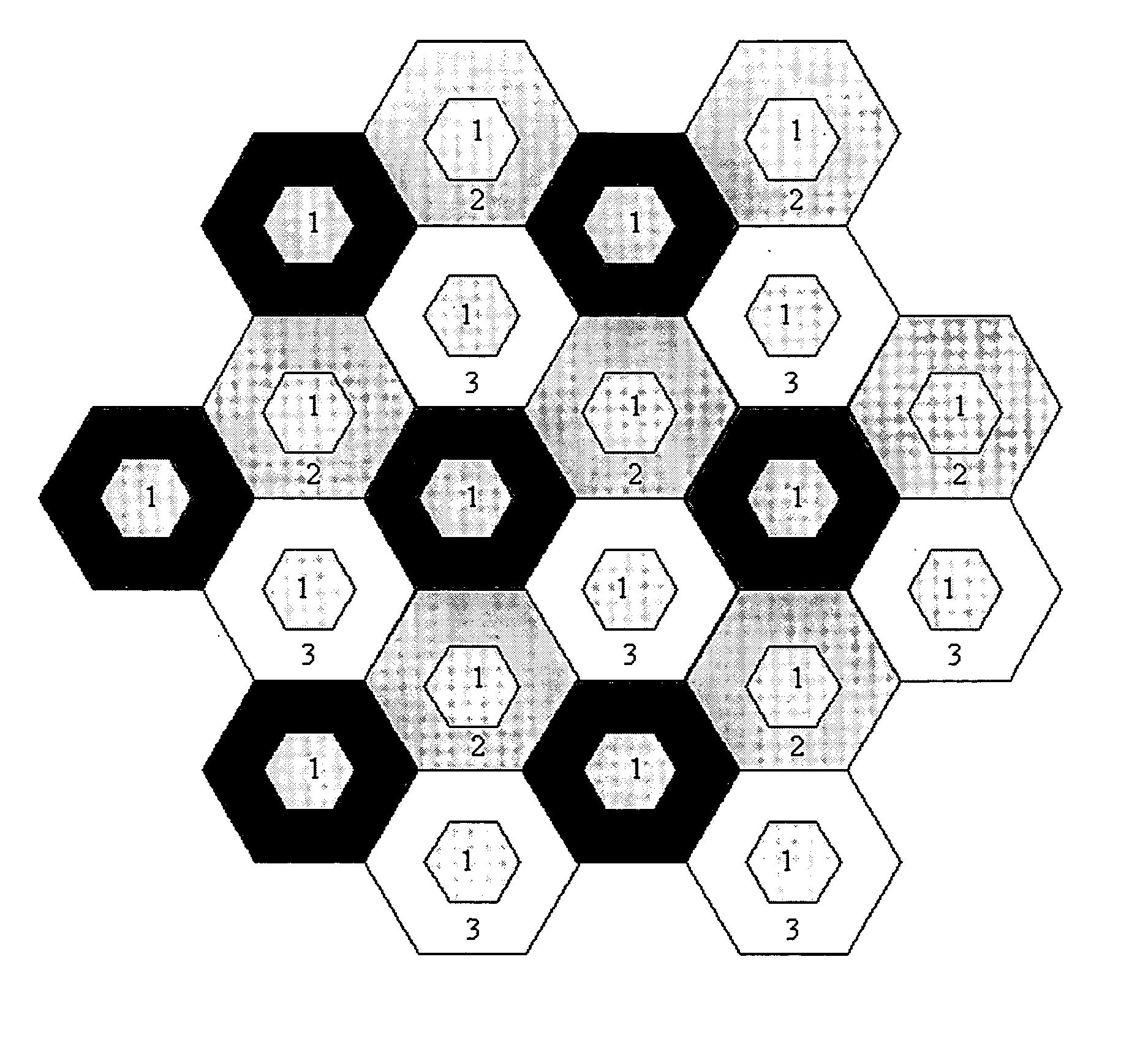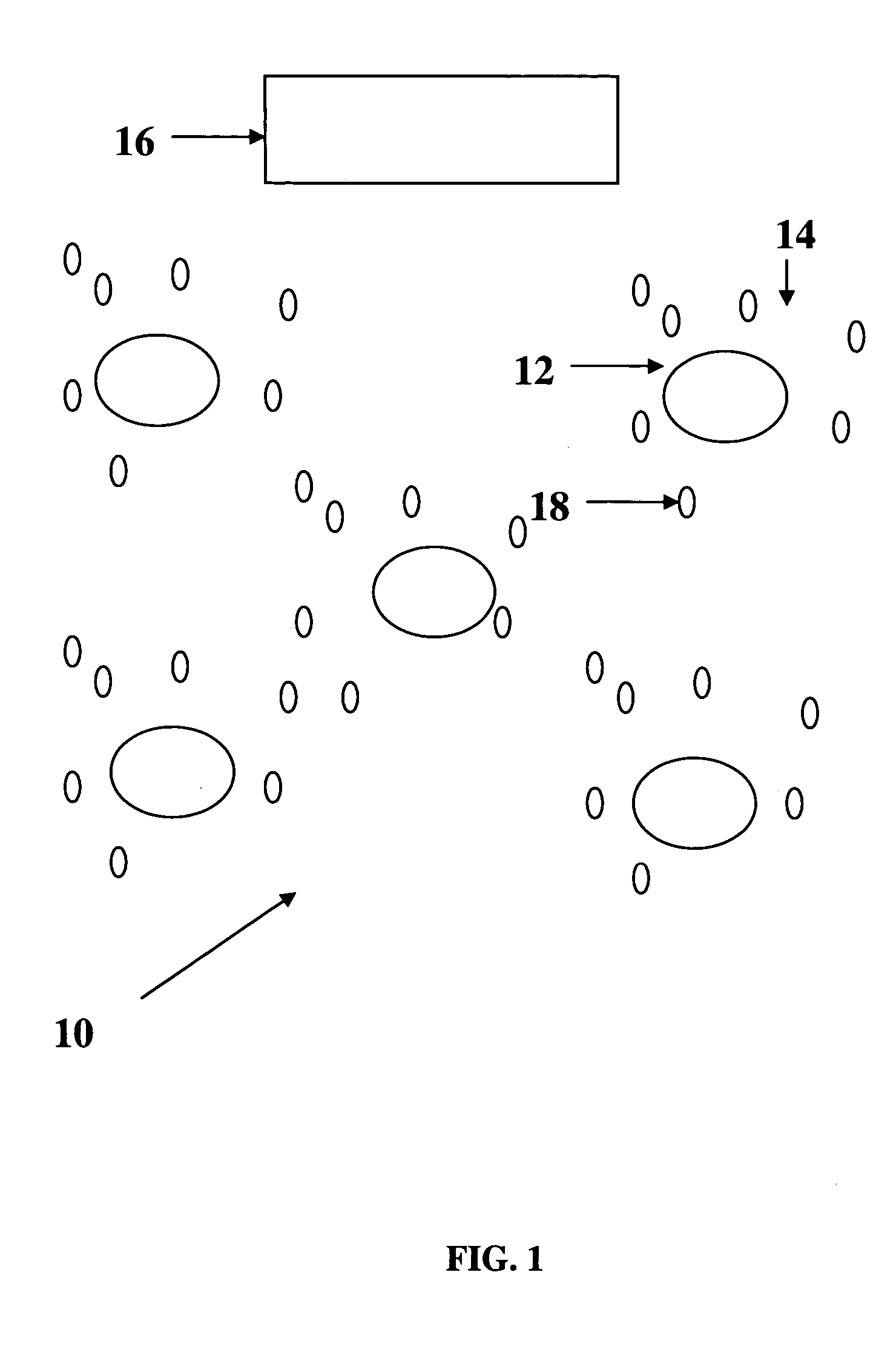Dynamic reuse partitioning and subchannel allocation scheme in multicell OFDMA downlink systems
a multi-cell, downlink technology, applied in the direction of electrical equipment, network planning, selection arrangements, etc., can solve the problems of rnc needing a lot of computational power, substantial amount of communication overhead, and every mobile user, so as to achieve less communication overhead and less computational power
- Summary
- Abstract
- Description
- Claims
- Application Information
AI Technical Summary
Benefits of technology
Problems solved by technology
Method used
Image
Examples
Embodiment Construction
[0025] In this specification, the system model and the problem formulation is introduced first. Then the two-step approach in accordance with one aspect of the present invention is presented. Then, simulation results are presented.
[0026] System Model and Problem Formulation
[0027] A downlink multicell OFDMA system 10 is illustrated in FIG. 1. There is one base station (“BS”) 12 located at the center of each cell 14 and there is a central Radio Network Controller (“RNC”) 16 which controls each BS 12. An OFDMA subcarrier is regarded as one transmission unit and it is assumed that one subcarrier can not be simultaneously used by more than one mobile user 18. Therefore, there is no intracell interference and the only factor impacting the transmission rate is interference from neighboring cells. Moreover, all the subcarriers are assumed to have the same power. Within each cell of radius R, there are at most 2 M subcarriers to be allocated to the active users in the cell. It is noted tha...
PUM
 Login to View More
Login to View More Abstract
Description
Claims
Application Information
 Login to View More
Login to View More - R&D
- Intellectual Property
- Life Sciences
- Materials
- Tech Scout
- Unparalleled Data Quality
- Higher Quality Content
- 60% Fewer Hallucinations
Browse by: Latest US Patents, China's latest patents, Technical Efficacy Thesaurus, Application Domain, Technology Topic, Popular Technical Reports.
© 2025 PatSnap. All rights reserved.Legal|Privacy policy|Modern Slavery Act Transparency Statement|Sitemap|About US| Contact US: help@patsnap.com



